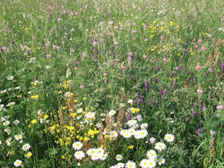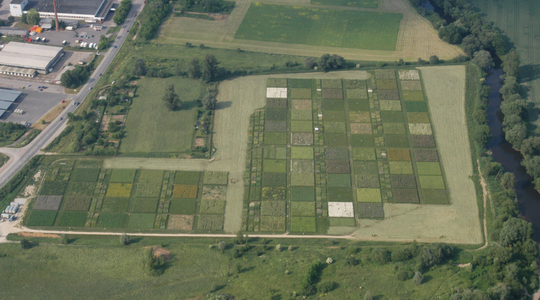The Jena Grassland Diversity Experiment
The Jena Experiment is a long-term experiment established in order to study the interactions between plant diversity and ecosystem processes, focussing on element cycling and trophic interactions. This is currently the world biggest experimental system focusing on the relationships between biodiversity and ecosystem functioning.

This experiment allows to test the effects of species number (drawn at random in a functional group) and of functional groups on the productivity and on the functioning of the grassland.

60 plant species, native and common to the Central European Arrhenatherum grasslands serve as species pool. Mixtures of one to 60 plant species and of one to four plant functional groups have been seeded as newly established communities on plots of 20 x 20 m. Each of the 60 species is also seeded in monocultures (2 repetitions), which is necessary to additionally decompose the effects of diversity (complementary and selection; Loreau and Hector 2001). Monocultures also allow to measure traits values of each plant species.
Finally, a complementary dominance experiment has been set up to discriminate the effects of species richness from those of presence/absence of a given species.
